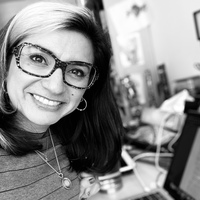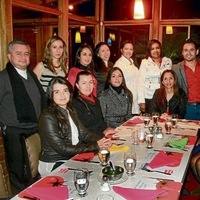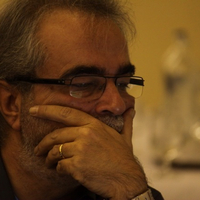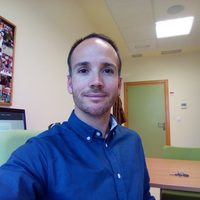
Linda Castañeda
Educationalist. Honours Degree on Pedagogy, PhD in Educational Technology.
I'm Associate Professor (Tenured) in Educational Technology at the Faculty of Education at the University of Murcia where I teach in some courses about uses and impact of technology in education.
Also, I'm part of the Group of Research in Educational Technology where we are working in some national and international projects related to the use and development of technologies for education. In addition, we work in the study of the impact of technology on students, teachers, and learners in general.
I'm a member of some international groups of research (EATEL, EDUTEC, PLE Conference), and I have collaborated with some external projects (Flashmeeting, iCamp project, TACCLE2).
My research interests are in Technology Enhanced Learning and the whole process of learning using technologies, always with a special focus on the educational point of view of these.
Phone: +34 868887788
Address: Facultad de Educación
Campus Universitario de Espinardo
30100 Murcia
Spain
I'm Associate Professor (Tenured) in Educational Technology at the Faculty of Education at the University of Murcia where I teach in some courses about uses and impact of technology in education.
Also, I'm part of the Group of Research in Educational Technology where we are working in some national and international projects related to the use and development of technologies for education. In addition, we work in the study of the impact of technology on students, teachers, and learners in general.
I'm a member of some international groups of research (EATEL, EDUTEC, PLE Conference), and I have collaborated with some external projects (Flashmeeting, iCamp project, TACCLE2).
My research interests are in Technology Enhanced Learning and the whole process of learning using technologies, always with a special focus on the educational point of view of these.
Phone: +34 868887788
Address: Facultad de Educación
Campus Universitario de Espinardo
30100 Murcia
Spain
less
Related Authors
Julio Cabero
Universidad de Sevilla
Jordi Adell Segura
Universitat Jaume I de Castelló
José Luis Serrano
Universidad de Murcia
InterestsView All (64)







Uploads
Papers by Linda Castañeda
Nowadays, PLE (Personal Learning Environments) is one of the most interesting concepts in the educational technology debate. In the discussion about PLE, technology and pedagogy are confronted, but at the same time –as usual–¬ are mutually dependent. The PLE is a product of the confluence of several factors, including the widespread Web 2.0 tools and services at almost all educational levels and modalities. Nevertheless, according the authors opinion, PLE is not a technological system intended to replace or complementing the existing ones. It is a new approach about how can we use information and communication technologies in order to enhance both, initial and lifelong learning. The present chapter attempts to define and clarify the concept, explore some didactic implications of it, as well as propose some ideas about the impact of it in diverse learning contexts.
Over a 4 month period (a semester in Spanish universities) two groups of first year students of a Social Education degree (around 150 pupils), were introduced to and encouraged to work with different web 2.0 tools. Each one of these tools was able to be used as a professional/work instrument (for Social Education purposes) and as a general learning resource (to be integrated into the PLE of each student). Following these ideas, the dynamics of the introduction of each tool started with a students’ hands-on session. Later, the students had to carry out some individual activities (proposed by teachers) using the tool, and finally, they had to integrate it into a group project dynamic, together with at least one special function (self organized).
In the final period of the course, students built, painted and published online their PLE diagram, and finally they reflected on the integration of each tool into their course work, into their group work (project developing dynamic), the impact of these tools on their PLE and the impact of the idea of the PLE on their professional and personal life.
In the meantime, teachers explored the student’s general development using web tools, their perception and attitudes around ICT, and their development in working and learning in a patchwork proposal of a technology enhanced learning environment for the course we built with them.
Why patchworking?
Wikipedia says about patchworks:
“long forms of needlework that involves sewing together pieces into a larger design[……] The larger design is usually based on repeat patterns built up with different colored shapes. These shapes are carefully measured and cut making them easy to piece together”
Would we use it to define the PLE building process as well?
Patchworking is used in this work only as a metaphor to describe the dynamic we have developed trying to help our students to build their own PLEs. Let’s start to explore how needlework around Web 2.0 tools can or couldn’t help our students to start to manufacturing their PLEs from the university.
This paper will start by providing an overview of the concepts of Personal Learning Environments and Personal Learning Networks as reported in the literature. It will then present the context of the project, and outline the results of the qualitative analysis of the content and data collected. The findings will highlight the critical elements in the creation and development of Personal Learning Environments and Networks and uncover new themes as they emerge from the analytic work done on the Twitter stories. The paper will also critically discuss these themes in detail with regards to the literature, and will finish with the preliminary conclusions of this ongoing research, and its future steps.